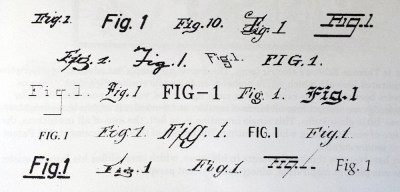Have you tried Altium CircuitMaker? Uh, you probably shouldn’t. [Dave] of EEVBlog fame informs us via a reliable source that CircuitMaker is intentionally crippled by adding a random sleep on high pad-count boards. The hilarious pseudocode suggested on the forum is if ((time.secs % 3) == 0) delayMicroseconds(padCount * ((rand() % 20) + 1));.Now, this is a rumor, however, I would assume [Dave] has a few back channels to Altium. Also, this assertation is supported by the documentation for CircuitStudio, which says, “While there are no ‘hard limits’ per se, the software has been engineered to make it impractical for use with large designs. To this end, the PCB Editor will start to exibit [sic] performance degradation when editing designs containing 5000 pads”. Chalk this up to another win for Fritzing; Fritzing will not slow down your computer on purpose.
Here’s an open challenge to everyone. As reported by [SexyCyborg], XYZPrinting (makers of the da Vinci printer) are patent trolling. This US patent is being used to take 3D printers off of the Amazon marketplace. Here’s the problem: no one can figure out what this patent is actually claiming. There’s something about multiple nozzles, and it might be about reducing nozzle travel, but I’m getting a ‘snap to bed’ vibe from this thing. Experts in 3D printing have no idea what this patent is claiming. The printer in question is the Ender 3, one of the first (actually the third…) China-based Open Source Hardware certified products, and it’s actually the best selling printer on Amazon at this time. I’m talking with Comgrow (the sellers of the Ender 3 on Amazon), and the entire situation is a mess. Look for an update soon.
Tired: Congress shall make no law… abridging the freedom of speech. Wired: But what if that speech is a gun? Wired‘s own Andy Greenberg advances the argument that computer code is not speech, contrary to many court rulings over the past 30 years (see Bernstein v. United States). Here’s the EFF’s amicus brief from the case. Read it. Understand it. Here’s a glowing Stephen Levy piece from 1994 on the export-controlled PGP for reference.
Like integrated circuits and microprocessors? Sure you do. Like drama? Oh boy have we got the thing for you. A week or so ago, ARM launched a website called RISC-V Basics (now unavailable, even from the Internet Archive, but you can try it here). It purports to settle the record on those new chips based on the capital-O Open RISC-V instruction set. In reality, it’s a lot of Fear, Uncertainty, and Doubt. This was an attempt by ARM Holdings to kneecap the upstart RISC-V architecture, but a lot of ARM engineers didn’t like it.



















